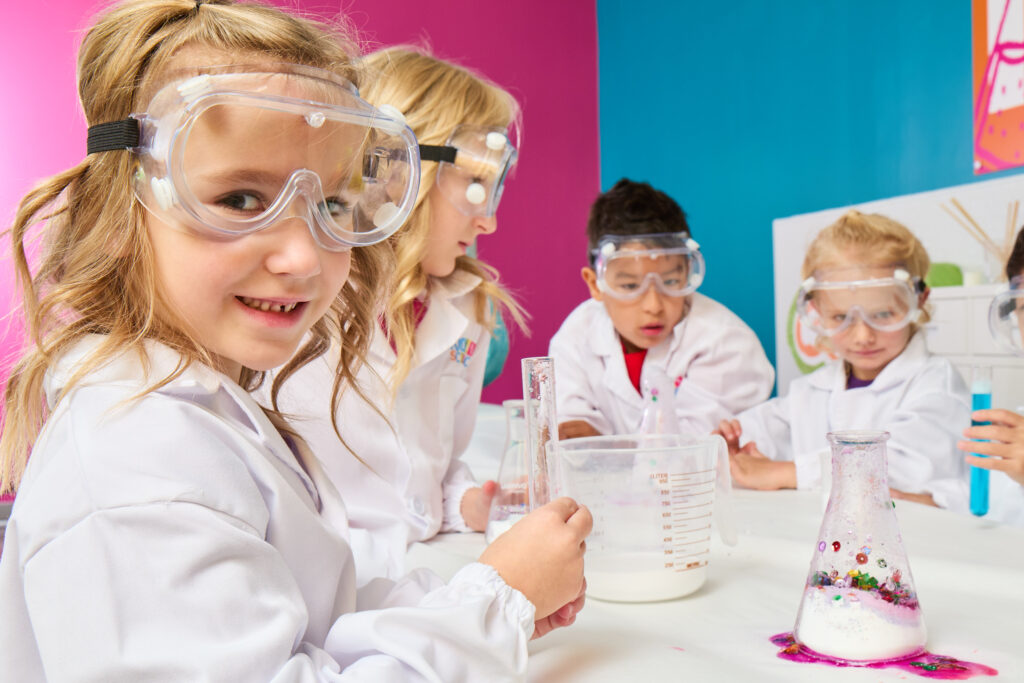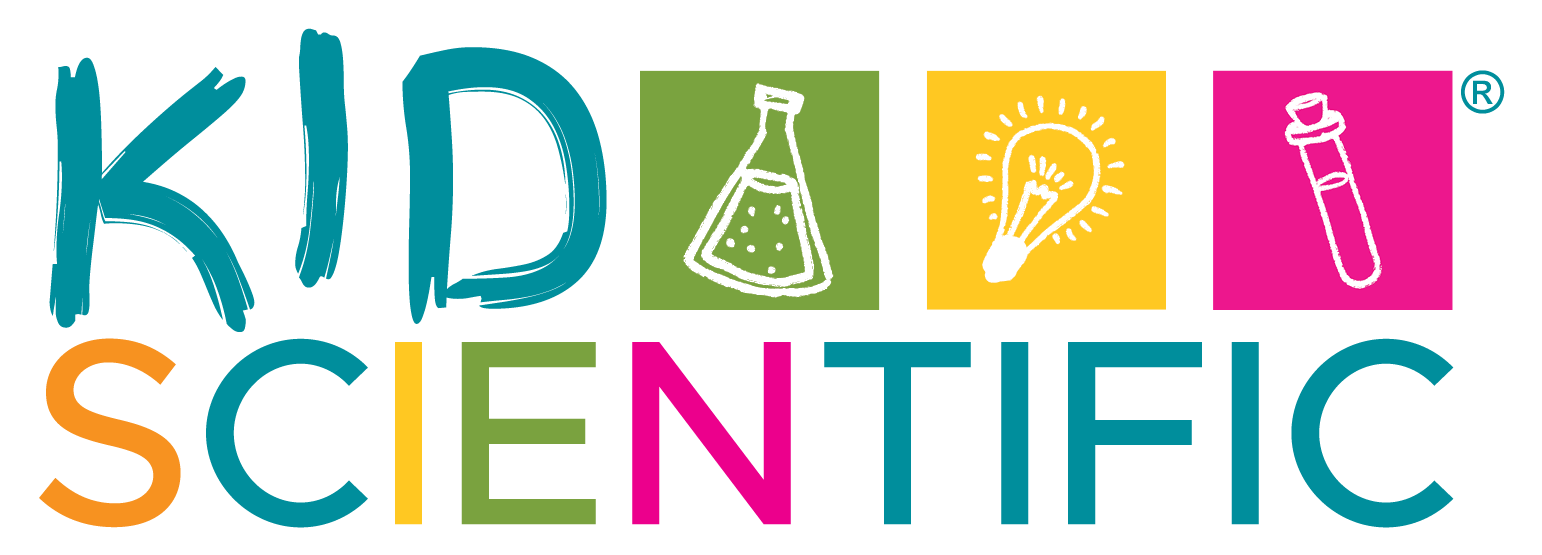Teaching the scientific method is one of the most effective ways to help children make sense of the world around them. It offers a structured approach to inquiry that’s easy to adapt for all ages, from preschoolers just starting to ask “why?” to older kids diving into more complex experiments.
At KidScientific, every class is designed with this process in mind. Whether we’re mixing up slime, testing chemical reactions, or exploring magnetism, children are constantly guided through the steps of the scientific method—transforming abstract concepts into hands-on, real-world understanding.

What Is the Scientific Method?
The scientific method is a step-by-step approach that scientists use to explore observations, ask questions, and find answers. For children, it provides a reliable way to explore their curiosity, test ideas, and think critically. While the terminology and depth may be adapted by age group, the foundational steps remain consistent:
1. Make an Observation
Every experiment starts with observation. What do you see? What’s going on? In this first step, kids slow down and pay attention to their surroundings. Whether it’s the way paint mixes with soap or how magnets attract, they’re trained to look closely and think critically about what’s happening.
2. Ask a Question
Once kids notice something interesting, it’s time to ask why? or how? This step sparks curiosity—and at KidScientific, curiosity is our superpower. Questions like “Why does salt melt ice?” or “Can sound make something move?” get young scientists thinking in new ways.
3. Develop a Hypothesis
The hypothesis is where kids make an educated guess. They predict what they think will happen—and learn it’s okay if they’re wrong. It’s all part of the process. We encourage creative thinking, even if the ideas seem a little out there.
4. Test the Prediction
Now the fun begins! Kids test their ideas with a hands-on experiment. This might include building, mixing, measuring, or even launching something into the air. It’s active, messy, and always memorable.
5. Analyze the Results
After the activity, it’s time to reflect. What worked? What didn’t? Why? Kids learn to compare their guesses to the results and draw conclusions—skills that build critical thinking and real-world problem-solving habits.
6. Make a Conclusion
The final step? Sharing! Scientists always share what they learn. Kids talk about what they discovered, sometimes even presenting to their class or group. This builds communication skills and reinforces their learning through storytelling.
Teaching this method early helps kids develop logic, patience, and resilience. They begin to see mistakes not as failures, but as part of the learning process—a powerful mindset both in and outside the classroom.
How KidScientific Brings the Scientific Method to Life
At KidScientific, the scientific method isn’t just explained—it’s experienced. Every class includes built-in opportunities for children to walk through these steps in a fun and engaging way.
A KidScientific class might start with a mystery: What will happen if we drop Mentos into a bottle of soda? From there, the instructor leads the group in forming a hypothesis, conducting a controlled test, and recording their findings. After discussing the results, kids are encouraged to ask new questions: Would it work with a different soda? What if we use warm water instead?
This process turns kiddos into active participants, not just observers. They aren’t passively receiving information—they’re discovering it for themselves. That’s where the real magic happens.
By guiding children through this process repeatedly in different science themes—from chemistry and physics to biology and earth science—KidScientific builds a strong foundation in scientific thinking. Each experiment reinforces the method, and each success (or failure!) becomes an opportunity to grow.
